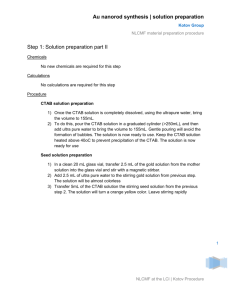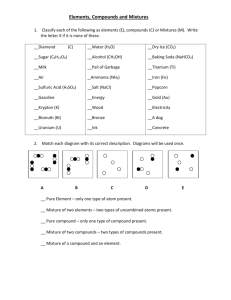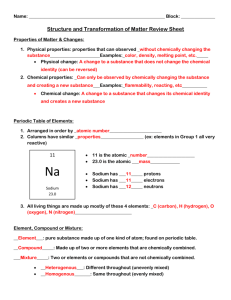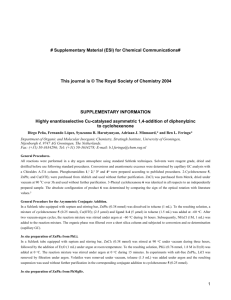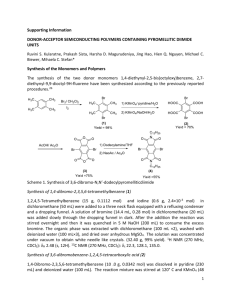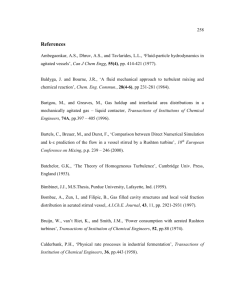Supporting information
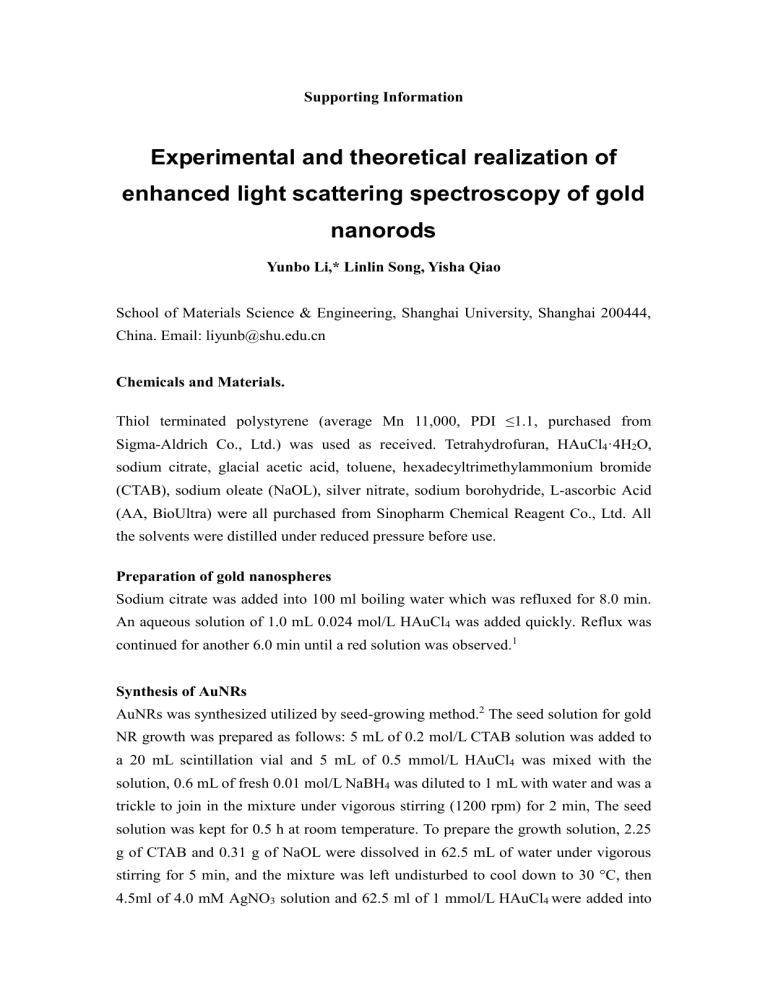
Supporting Information
Experimental and theoretical realization of enhanced light scattering spectroscopy of gold nanorods
Yunbo Li,* Linlin Song, Yisha Qiao
School of Materials Science & Engineering, Shanghai University, Shanghai 200444,
China. Email: liyunb@shu.edu.cn
Chemicals and Materials.
Thiol terminated polystyrene (average Mn 11,000, PDI ≤1.1, purchased from
Sigma-Aldrich Co., Ltd.) was used as received. Tetrahydrofuran, HAuCl
4
·4H
2
O, sodium citrate, glacial acetic acid, toluene, hexadecyltrimethylammonium bromide
(CTAB), sodium oleate (NaOL), silver nitrate, sodium borohydride, L-ascorbic Acid
(AA, BioUltra) were all purchased from Sinopharm Chemical Reagent Co., Ltd. All the solvents were distilled under reduced pressure before use.
Preparation of gold nanospheres
Sodium citrate was added into 100 ml boiling water which was refluxed for 8.0 min.
An aqueous solution of 1.0 mL 0.024 mol/L HAuCl
4
was added quickly. Reflux was continued for another 6.0 min until a red solution was observed.
1
Synthesis of AuNRs
AuNRs was synthesized utilized by seed-growing method.
2
The seed solution for gold
NR growth was prepared as follows: 5 mL of 0.2 mol/L CTAB solution was added to a 20 mL scintillation vial and 5 mL of 0.5 mmol/L HAuCl
4
was mixed with the solution, 0.6 mL of fresh 0.01 mol/L NaBH
4
was diluted to 1 mL with water and was a trickle to join in the mixture under vigorous stirring (1200 rpm) for 2 min, The seed solution was kept for 0.5 h at room temperature. To prepare the growth solution, 2.25 g of CTAB and 0.31 g of NaOL were dissolved in 62.5 mL of water under vigorous stirring for 5 min, and the mixture was left undisturbed to cool down to 30 °C, then
4.5ml of 4.0 mM AgNO
3
solution and 62.5 ml of 1 mmol/L HAuCl
4 were added into
the mixture and the solution was kept at 30
0
C for 15 min, then the solution was stirred for 1.5 h and became colorless.
0.53 ml of 12.1 mol/L HCl was dropwised into the growth solution. After stirring for
15 min, ascorbic acid (AA) was added and the solution was vigorously stirred for 0.5 min. Finally, 0.1 ml seed solution was injected into the growth solution. The resultant solution was vigorously stirred for 0.5 min and kept undisturbed at 30°C for 12 h for
AuNRs growth.
Preparation of AuNPs-PS mixtures
Thiol terminated polystyrene was dissolved into toluene, which was added with aqueous solution of AuNPs. The mixture solution was stirred by magnetic stirring for
10 h at room temperature. Then the mixture solution was put at ventilation places.
After one day, the toluene was almost volatized, and then the AuNPs-PS mixtures were obtained.
Characterization.
Field emission transmission electron microscopy (FETEM) images were obtained on a JEM–200CX TEM (JEOL, Japan) equipped with a Model GATAN782 CCD camera at an operating voltage of 120 kV. In order to prepare FETEM specimens, polymer/AuNP film was deposited onto a carbon–coated copper grid.
Ultraviolet–visible (UV–vis) spectra were obtained with an Agilent 8453 spectrophotometer (Agilent technologies, CA, USA) equipped with an automatic sampling system.
The Synchronous scan spectra were performed at room temperature on a RF–5301PC
Spectrofluorophotometer (Shimadzu Corporation, Japan) equipped with a 150 W
Xenon lamp, a recorder and dual monochromators. The slit (ex/em) width was 3.0 nm/3.0 nm. The sensitivities of the equipment ware chosen low. The enhanced light spectra were recorded in range of 220–900 nm with synchronous scanning at Δλ=λ ex
–λ em
=0 nm 。
References
1. Y. Li, L. Song, Y. Qiao. RSC Advances , 4 , 57611 (2014).
2. X. Ye, C. Zheng, J. Chen Y. Gao, C. B. Murray. Nano letters, 13 , 765 (2013).
